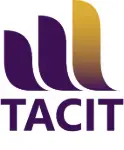The Tacit Investment Strategy Group meets every quarter with the sole purpose of taking a long view on the global economy and global asset markets. In a world where daily news flow can skew opinion and perception the role of this group is to review, without short term bias, financial markets in the context of history. The historic context is important to us as we believe the fundamental drivers of economics and investment returns are fixed (the most fundamental being the real return on sovereign debt), and that markets revert toward the mean after periods of deviation from that historic base level.
In the meeting this week the clear takeaways were:
- Increased political risk premia with a reversal of the ‘peace dividend’
- Realignment of trading partnerships
- Higher for longer debt burdens in developed countries
- Interest rates to remain positive in real terms, i.e. above inflation rates
- Technology could provide a leg up to smaller economies at the expense of the largest outside the US
The conundrum all investors continue to be faced with today is no different to that we have which we have grappled with for the past decade: will asset prices continue to climb a wall of worry, or will something give?
This is not an unusual scenario and in fact has been a common thread through every ISG meeting we have held for the past 14 years. Asset markets have rarely been cheap over this period, albeit with periodic shocks such as COVID.
The reality is that the global balance sheet of net worth more than tripled between the years 2000 and 2020. Assets grew from $440 trillion in 2000 to $1540 trillion in 2020, with net worth growing from $160 trillion to $510 trillion (source: McKinsey & Company, 2021). These assets have to be invested somewhere. A risk-averse investor may hold cash yielding 5% for one year, or government bonds yielding 5% with the certainty of this return for five years. A risk-taking investor may buy US tech companies with free cash flow yields of over 10%, as this has historically led to a significantly higher equity price in the future.
The most important consideration we believe is that for the risk takers, there are not many companies around the world that offer these free cash flow yields and therefore it feels uncomfortable to add investments to equity markets when returns are be driven by such a narrow cohort of companies.
This may be the case at the moment, however the reason you invest in equities is for the potential to generate better returns then you would by holding cash. At some point in the future, Point 5 above is the longer term factor which we believe is under estimated and underappreciated by those that focus on the narrow leadership in equity markets at present.
We have regularly written about how economies such as India have embraced emerging technology such as the internet enabled mobile phone to leapfrog stages of development that other economies like the UK did not embrace as quickly, or indeed as productively, due to the incumbent technologies (landline telephones and personal computers) as the need was not as urgent. The digital era is now ubiquitous and the present race to embed AI into all aspects of our daily lives will almost certainly be the next step change in the power of digital technology. This type of epoch-changing development, if embraced, is likely to generate economic growth over the medium term which at present cannot be quantified. Just as the wheel allowed humans to move goods more effectively and the steam engine improved on distance and volume, we anticipate that new technology will lead to higher assets prices globally, with those embracing change doing best.

